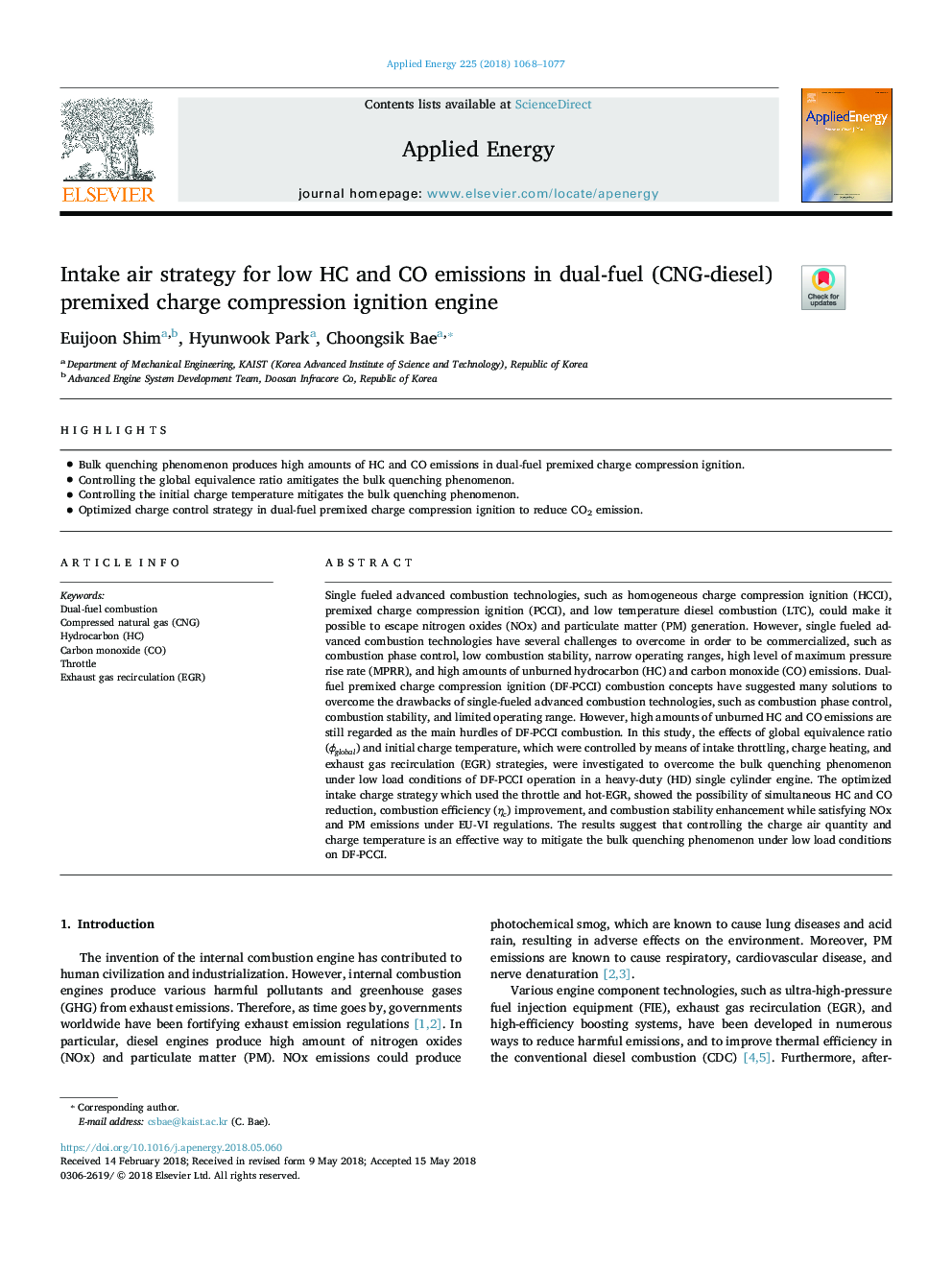| کد مقاله | کد نشریه | سال انتشار | مقاله انگلیسی | نسخه تمام متن |
|---|---|---|---|---|
| 6680008 | 1428065 | 2018 | 10 صفحه PDF | دانلود رایگان |
عنوان انگلیسی مقاله ISI
Intake air strategy for low HC and CO emissions in dual-fuel (CNG-diesel) premixed charge compression ignition engine
دانلود مقاله + سفارش ترجمه
دانلود مقاله ISI انگلیسی
رایگان برای ایرانیان
کلمات کلیدی
موضوعات مرتبط
مهندسی و علوم پایه
مهندسی انرژی
مهندسی انرژی و فناوری های برق
پیش نمایش صفحه اول مقاله

چکیده انگلیسی
Single fueled advanced combustion technologies, such as homogeneous charge compression ignition (HCCI), premixed charge compression ignition (PCCI), and low temperature diesel combustion (LTC), could make it possible to escape nitrogen oxides (NOx) and particulate matter (PM) generation. However, single fueled advanced combustion technologies have several challenges to overcome in order to be commercialized, such as combustion phase control, low combustion stability, narrow operating ranges, high level of maximum pressure rise rate (MPRR), and high amounts of unburned hydrocarbon (HC) and carbon monoxide (CO) emissions. Dual-fuel premixed charge compression ignition (DF-PCCI) combustion concepts have suggested many solutions to overcome the drawbacks of single-fueled advanced combustion technologies, such as combustion phase control, combustion stability, and limited operating range. However, high amounts of unburned HC and CO emissions are still regarded as the main hurdles of DF-PCCI combustion. In this study, the effects of global equivalence ratio (Ïglobal) and initial charge temperature, which were controlled by means of intake throttling, charge heating, and exhaust gas recirculation (EGR) strategies, were investigated to overcome the bulk quenching phenomenon under low load conditions of DF-PCCI operation in a heavy-duty (HD) single cylinder engine. The optimized intake charge strategy which used the throttle and hot-EGR, showed the possibility of simultaneous HC and CO reduction, combustion efficiency (ηc) improvement, and combustion stability enhancement while satisfying NOx and PM emissions under EU-VI regulations. The results suggest that controlling the charge air quantity and charge temperature is an effective way to mitigate the bulk quenching phenomenon under low load conditions on DF-PCCI.
ناشر
Database: Elsevier - ScienceDirect (ساینس دایرکت)
Journal: Applied Energy - Volume 225, 1 September 2018, Pages 1068-1077
Journal: Applied Energy - Volume 225, 1 September 2018, Pages 1068-1077
نویسندگان
Euijoon Shim, Hyunwook Park, Choongsik Bae,